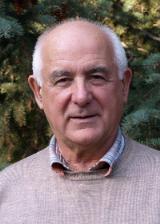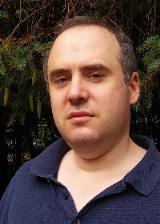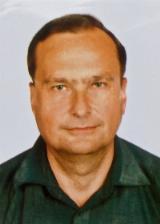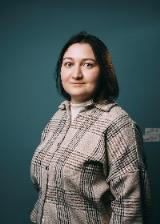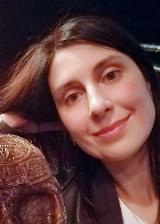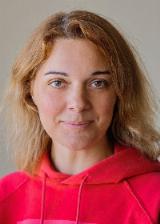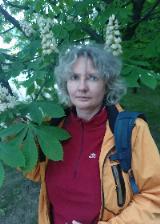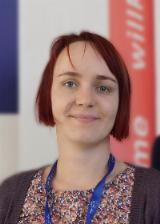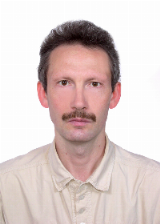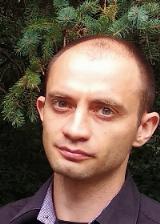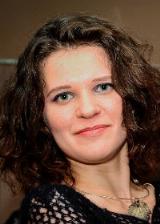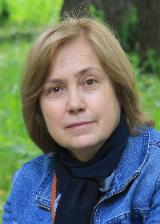Laboratory of Neurobiology of Sleep and Wake
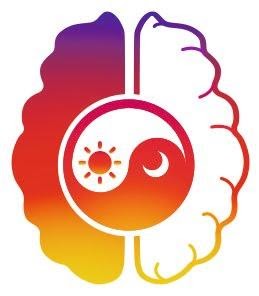
The laboratory was organized in 2007, Dr. Sc. V.B. Dorokhov. The creation of the laboratory was preceded by organizational work to restore the interest of the scientific community to research in the field of experimental somnology in our country. Research laboratory "Neurobiology of sleep and wakefulness" aimed at analyzing the relationship between sleep and the implementation of cognitive functions in the waking state. This research area can be briefly formulated as “Sleep, Activity, and Cognitive Functions.” Within the framework of this problem, the following are studied: mechanisms of disturbed activity caused by a critical decrease in the level of wakefulness; the role of daytime sleep in the restoration of human performance; sleep involvement in human and animal memory consolidation processes.
Currently, laboratory research is conducted in the following areas:
1) The study of the psycho-physiological mechanisms of falling asleep - the transition from wakefulness to sleep.
The theoretical basis of these studies is the perception (Dorokhov VB 2001-2008) that the interaction of regulatory systems of wakefulness and sleep when falling asleep is accompanied by mental processes associated with the emergence of a drowsy state of consciousness, which is characterized by switching attention from analyzing information coming from the outside world to processing information retrieved from the memory. This transition is not recognized by the subject, which, on the one hand, provides a normal transition to physiological sleep, but on the other hand, the unawareness of the process of falling asleep while performing monotonous activities is the cause of various incidents in transport and production during a critical decrease in wakefulness. The laboratory has developed several experimental models for the study of impaired professional activity caused by a decrease in wakefulness when performing monotonous monotonous activities. The results of these studies were used to create the Machinist Wakefulness Control System (TSKBM), produced by Neurokom CJSC for railway transport. Violations of visual-motor coordination on a model of monotonous activity that simulates falling asleep at the wheel are currently being investigated. To register eye movement, a non-contact method of eye movement video registration (Eyegaze Development System, LC Technologies, USA) is used.
2) Study of sleep functions in learning and memory consolidation.
Currently, most researchers believe that sleep is involved in the processes of consolidation (consolidation) of memory - the transition of short-term memory into long-term memory. However, the role of individual phases of sleep in the formation of different types of memory and their subtle mechanisms remain unknown. The study of the role of sleep in learning is carried out both on animals and on humans. The results obtained showed the effectiveness of the experimental models used to study the role of sleep in memory consolidation processes, both in animals and in humans.
3) Non-pharmacological methods of improving sleep quality.
The laboratory studies the effectiveness of low-frequency peripheral stimulation of different modalities, with frequency parameters characteristic of EEG during falling asleep and deep sleep. Studies have been conducted on the effects of near-threshold electrodermal stimulation, acoustic stimulation with binaural beats, acoustic stimulation synchronized with delta waves of sleep, and weak electromagnetic fields of ultra-low frequency.
4) Chronotypes and operator performance.
It is known that the efficiency of operator activity during night and shift work depends on individual features of a person's chronotype, depending on which the lack of sleep can be expressed in different degrees. Correlation analysis of single nucleotide polymorphisms (SNP) of a number of genes with chronotype parameters and accident statistics in sliding schedule bus drivers was carried out using a large sample of professional drivers (299 subjects) working on a rotating schedule with 10-year accident statistics. At present, studies aimed at expanding the chronotype characteristics and determining its markers in EEG characteristics, as well as manifestation in individual features of work and cognitive activity are actively carried out on large samples.
Scientific cooperation: a number of IHNA&NPh RAS laboratories; the Department Higher Nervous Activity, Biological Faculty and the Department of Psychophysiology, Faculty of Psychology, Lomonosov Moscow State University; A.N. Severtsov Institute of Ecology and Evolution RAS, V.A. Kotel'nikov Institute of Radio Engineering and Electronics RAS; CJSC "NEUROCOM" and other institutions.
Grants: Research supported by RFBR grants; RHF; The basic research program of the Presidium of the Russian Academy of Sciences "Fundamental sciences - to medicine"; RAS program "Mechanisms of physiological functions: from molecule to behavior."
Список сотрудников
Publication list
Papers
- ALIPOV N.N., SERGEEVA O.V., Cheremushkin E.A., Petrenko N.E., PRISUKHA N.S. The relationship between autonomic function tests and the degree of autonomic dysfunction in second year students. Bulletin of Neurology, Psychiatry and Neurosurgery. 2022. N. 1. P. 30-36. DOI: 10.33920/med-01-2201-03
- Petrenko N.E., Cheremushkin E.A., Dorokhov V.B. CHANGES IN THE EEG DURING THE INITIAL PERIOD OF FALLING ASLEEP AND THE FIRST EPISODE OF SHORT-TERM DAYTIME SLEEP DURING A PSYCHOMOTOR TEST. International research journal. 2022. V. 121. N. 7. P. 100-104. DOI: 10.23670/IRJ.2022.121.7.057
- Cheremushkin E.A., Petrenko N.E., ALIPOV N.N., SERGEEVA O.V. Changes in the power characteristics of the alpha-rhythm in students with different levels of anxiety in normal sleep and partial deprivation when solving the go/nogo problem. Human Physiology. 2022. V. 48. N. 2. P. 79-85. DOI: 10.31857/S0131164622020047
- Cheremushkin E.A., Petrenko N.E., Alipov N.N., SERGEEVA O.V., PRISUKHA N.S. INDIVIDUAL CHARACTERISTICS AND QUALITY OF LIFE IN FEMALE UNDERGRADUATE MEDICAL STUDENTS WITH DIFFERENT COMBINATIONS OF AUTONOMIC DYSFUNCTION AND PERSONALITY ANXIETY. Head and Neck. 2022. V. 10 . N. S2S2. P. 39-41. DOI: 10.25792/HN.2022.10.2.S2.39-41
- Yakovenko I.A., Petrenko N.E., Cheremushkin E.A., Dorokhov V.B. Rhythm Interaction Preceding the Awakening Moment with Subsequent Restoration of Activity after Brief Falling Asleep Episodes. Journal of Evolutionary Biochemistry and Physiology. 2022. V. 108. N. 4. P. 443-454. DOI: 10.31857/S0869813922040094
- Yakovenko I.A., Petrenko N.E., Cheremushkin E.A., Tkachenko O.N., Dorokhov V.B. INTERHEMISPHERIC ASYMMETRY OF EEG RHYTHM CONNECTIONS DURING SPONTANEOUS AWAKENINGS AFTER SHORT SLEEP EPISODES DURING A MONOTONOUS PSYCHOMOTOR TEST. Journal of Neurology and Psychiatry named after C.C. Korsakov. 2022. V. 122. . N. 5-2. P. 18-22. DOI: 10.17116/jnevro202212205218
- Cheremushkin E.A., Petrenko N.E., Dorokhov V.B. EEG Characteristics and Anxiety Levels in Subjects with Different Levels of Success in Recovering Psychomotor Activity on Waking During Daytime Sleep. Neuroscience and Behavioral Physiology. 2022. V. 52. N. 4. P. 562-567. DOI: 10.1007/s11055-022-01275-7
- Cheremushkin E.A., Petrenko N.E., Dorokhov V.B. Sleep and Neurophysiological Correlates of Activation of Consciousness on Awakening. Neuroscience and Behavioral Physiology. 2022. V. 52. N. 2. P. 213-217. DOI: 10.1007/s11055-022-01226-2
- Puchkova A.N., Poluektov M.G. Sleep as a biological rhythm: clinical aspects. Meditsinskiy sovet = Medical Council. 2021. N. 2. P. 56-61. DOI: 10.21518/2079-701X-2021-2-56-61
- Cheremushkin E.A., Petrenko N.E., Dorokhov V.B. Sleep and neurophysiological correlates of consciousness activation upon awakening. S.S. Korsakov Journal of Neurology and Psychiatry. 2021. V. 121. N. 4-2. P. 14-18. DOI: 10.17116/jnevro202112104214
- Cheremushkin E.A., Petrenko N.E., Dorokhov V.B. EEG Characteristics and the Level of Anxiety of Tests with Different Successes of Restoring Psychomotor Activities during Waking Up during Daily Sleep. Rossiiskii Fiziologicheskii Zhurnal im. I.M. Sechenova. 2021. V. 107. N. 10. P. 1299-1309. DOI: 10.31857/S0869813921100034
- Yakovenko I.A., Petrenko N.E., Cheremushkin E.A., Dorokhov V.B. INTERHEMISPHERIC ASYMMETRY OF THE EEG RHYTHMS COUPLING DURING THE ACTION OF A COGNITIVE SET IN STUDENTS WITH DIFFERENT DURATION OF NIGHT SLEEP. Jornal of asymmetry. 2021. V. 15. N. 3. P. 15-26. DOI: 10.25692/ASY.2021.15.3.002
- Dorokhov V.B., Sveshnikov D.S., Puchkova A.N., Taranov A.O., Sakharov D.S., Gruzdeva S.S., Tkachenko O.N., Arseniev G.N., Ligun N.V., Dementienko V.V., Bakaeva Z.B., Yakunina E.B., Starshinov Y.P., Torshin V.I., Donskaya O.G., Putilov A.A. Differential relationship of two measures of sleepiness with the drives for sleep and wake. Sleep and Breathing. 2021. DOI: 10.1007/s11325-020-02269-w
- Putilov A.A., Nechunaev V.V., Budkevich R.O., Budkevich E.V., Kolomeichuk S.N., Morozov A.V., Plusnin J.M., Sveshnikov D.S., Donskaya O.G., Verevkin E.G., Arseniev G.N., Puchkova A.N., Dorokhov V.B. Overlap between individual variation in personality traits and sleep-wake behavior. Current Psychology. 2021. DOI: 10.1007/s12144-021-01495-z
- Putilov A.A., Sveshnikov D.S., Bakaeva Z.B., Yakunina E.B., Starshinov Y.P., Torshin V.I., Alipov N.N., Sergeeva O.V., Trutneva E.A., Lapkin M.M., Lopatskaya Z.N., Budkevich R.O., Budkevich E.V., Puchkova A.N., Dorokhov V.B. Differences between male and female university students in sleepiness, weekday sleep loss, and weekend sleep duration. Journal Of Adolescence. 2021. V. 88. P. 84-96. DOI: 10.1016/j.adolescence.2021.02.006
- Putilov A.A., Sveshnikov D.S., Puchkova A.N., Dorokhov V.B., Bakaeva Z.B., Yakunina E.B., Starshinov Y.P., Torshin V.I., Alipov N.N., Sergeeva O.V., Trutneva E.A., Lapkin M.M., Lopatskaya Z.N., Budkevich R.O., Budkevich E.V., Dyakovich M.P., Donskaya O.G., Plusnin J.M., Delwiche B., Colomb C., Neu D., Mairesse O. Single-Item Chronotyping (SIC), a method to self-assess diurnal types by using 6 simple charts. Personality and Individual Differences. 2021. V. 168. P. 110353. DOI: 10.1016/j.paid.2020.110353
- Shumov D.E. Auditory Steady State Response to the Music with Embedded Binaural Beats during Daytime Sleep. Moscow University Biological Sciences Bulletin. 2021. V. 76. N. 2. P. 41-45. DOI: 10.3103/S0096392521020061
- Cheremushkin E.A., Petrenko N.E., Gendzhalieva M.S., Malakhov D.G., Dorokhov V.B. EEG Characteristics in the Process of Short-Time Spontaneous Wakes of Different Duration at Changes in Psychomotor Activity Caused by Falling Asleep. Rossiiskii Fiziologicheskii Zhurnal im. I.M. Sechenova. 2020. V. 106. N. 3. P. 342-355. DOI: 10.31857/S0869813920030036
- Cheremushkin E.A., Petrenko N.E., Gendzhalieva M.S., Malakhov D.G., Dorokhov V.B. EEG Characteristics during Short-Term Spontaneous Waking Periods of Different Durations with Changes in Psychomotor Activity Induced by Falling Asleep. Neuroscience and Behavioral Physiology. 2020. V. 50. N. 9. P. 1232-1238. DOI: 10.1007/s11055-020-01024-8
- Dorokhov V.B., Gruzdeva S., Tkachenko O.N., Cheremushkin E.A., Petrenko N.E. Experimental Model of Consciousness in the Sleep-Wake Paradigm: Determining Consciousness Activation Using Behavioral and Electromyographic Indicators. Procedia Computer Science. 2020. V. 169. P. 840-844. DOI: 10.1016/j.procs.2020.02.154
- Dorokhov V.B., Puchkova A.N., Arseniev G.N., Slominsky P.A., Dementrienko V.V., Sveshnikov D.S., Putilov A.A. Association of obesity in shift workers with the minor allele of a single-nucleotide polymorphism (rs4851377) in the largest circadian clock gene (NPAS2). Biological Rhythm Research. 2020. V. 51. N. 4. P. 522-534. DOI: 10.1080/09291016.2018.1537558
- Dorokhov V.B., Taranov A.O., Sakharov D.S., Gruzdeva S.S., Tkachenko O.N., Arseniev G.N., Ligun N.V., Sveshnikov D.S., Bakaeva Z.B., Dementienko V.V., Puchkova A.N. Effects of exposures to weak 2-Hz vs. 8-Hz electromagnetic fields on spectral characteristics of the electroencephalogram in afternoon nap. Biological Rhythm Research. 2020. DOI: 10.1080/09291016.2020.1857936
- Midzyanovskaya I.S., Petrenko N.E., Biryukova L.M., Tuomisto L.M. Reduced H3 histamine receptor binding densities in the upper layers of motor cortex in rats prone to audiogenic convulsive seizures. Epilepsy Research. 2020. V. 170. P. 106543. DOI: 10.1016/j.eplepsyres.2020.106543
- Puchkova A.N. Research of learning during sleep: pitfalls, advances and promises. S.S. Korsakov Journal of Neurology and Psychiatry. 2019. V. 119. N. 4. P. 8-14. DOI: 10.17116/jnevro20191190428
- Puchkova A.N., Dorokhov V.B. -. // -. Eds. - Moscow: -. 2019. P. 401-416.
- Cheremushkin E.A., Petrenko N.E., Gendzhalieva M.S., Dorokhov V.B. Changes in the low-frequency alpha rhythm of the electroencephalogram as an indicator of the degree of recovery of psychomotor activity during spontaneous awakening from daytime sleep. Effektivnaya Farmakoterapiya. 2019. V. 15. N. 44. P. 26-31. DOI: 10.33978/2307-3586-2019-15-44-26-31
- Cheremushkin E.A., Petrenko N.E., Gendzhalieva M.S., Yakovenko I.A., Malakhov D.G., Dorokhov V.B. EEG Activity Preceding Spontaneous Restoration of Psychomotor Activity after Microsleep Episodes. Rossiiskii Fiziologicheskii Zhurnal im. I.M. Sechenova. 2019. V. 105. N. 8. P. 1002-1012. DOI: 10.1134/S086981391908003X
- Yakovenko I.A., Petrenko N.E., Cheremushkin E.A., Dorokhov V.B. Relationships between eeg rhythmical components in the process of preparation to visual recognition in students with sleep disorders. HUMAN ECOLOGY. 2019. N. 3. P. 46-52. DOI: 10.33396/1728-0869-2019-3-46-52
- Putilov A., Dorokhov V.B., Puchkova A.N., Arseniev G.N., Sveshnikov D.S. Genetic-based signatures of the latitudinal differences in chronotype. Biological Rhythm Research. 2019. V. 50. N. 2. P. 255-271. DOI: 10.1080/09291016.2018.1465249
- Taranov A.O., Puchkova A.N., Slominskii P.A., Tupitsyna T.V., Dementienko V.V., Dorokhov V.B. Association of Chronotype, Road Traffic Accidents, and Polymorphisms in Genes Linked with the Biological Clock and the Dopaminergic System. Neuroscience and Behavioral Physiology. 2019. V. 49. N. 1. P. 20-24. DOI: 10.1007/s11055-018-0685-2
- Yakovenko I.A., Petrenko N.E., Cheremushkin E.A., KOZLOV M.K. Interaction of EEG Rhythms in a Set to a Facial Expression. Neuroscience and Behavioral Physiology. 2019. V. 49. N. 4. P. 508-513. DOI: 10.1007/s11055-019-00763-7
- Yakovenko I.A., Shumov D.E., Petrenko N.E., KOZLOV M.K., Dorokhov V.B. THE STUDY OF RHYTHMIC COMPONENT COUPLING AT THE FIRST STAGE OF DAY SLEEP. MOSCOW UNIVERSITY BIOLOGICAL SCIENCES BULLETIN. 2019. V. 74. N. 2. P. 98-102. DOI: 10.3103/S0096392519020111
- Yakovenko I.A., Petrenko N.E., Cheremushkin E.A., Kozlov M.K., Dorokhov V.B. The functional role of the beta-rhythm connection with slow rhythms in students with insomnia during formation of perceiving the facial expression. I.M. Sechenov Russian Journal of Physiology. 2018. V. 104. N. 10. 1238-1249. DOI: 10.7868/S0869813918100106
- Cheremushkin E.A., Petrenko N.E. Top–Down Cognitive Control in Students with a Rigid Set-on Facial Expression. KnE Life Sciences (in The Fifth International Luria Memorial Congress «Lurian Approach in International Psychological Science). 2018. P. 241-248. DOI: 10.18502/kls.v4i8.3281
- Cheremushkin E.A., Petrenko N.E., Yakovenko I.A., Gordeev S.A., Alipov N.N., Sergeeva O.V. Human neurophysiological markers of high anxiety level during preparation for visual recognition. Journal of Integrative Neuroscience. 2018. V. 17. N. 3. P. 193-201. DOI: 10.31083/JIN-170074
- Kostandov E.A., Cheremushkin E.A., Petrenko N.E., Yakovenko I.A. Weakening of the Top-Down Inhibitory Influences from the Prefrontal Cortex under the Loading of the Working Memory in Students with Learning Difficulties. Human Physiology. 2018. V. 44. N. 1. P. 7-14. DOI: 10.1134/S0362119718010115
- Dumenko V.N., Kozlov M.K., Cheremushkin E.A., Petrenko N.E. Changes in the severity of eeg components (8-60 hz) is influenced by the presentation of the go/nogo stimuli on the background of the 16-second interval, depending on the "success" of the subjects. Journal of Higher Nervous Activity named I.P. Pavlov. 2017. V. 67. N. 2. 150-164. DOI: 10.7868/S0044467717010051
- Kostandov E.A., Cheremushkin E.A., Petrenko N.E., Yakovenko I.A. A cognitive hypothesis of the development of differentiative cortical inhibition in humans. Human Physiology. 2016. V. 42. N. 4. P. 351-360. DOI: 10.1134/S0362119716040083
- Kostandov E.A., Cheremushkin E.A., Yakovenko I.A., Petrenko N.E. Induced Synchronization of the Alpha Rhythm During the Pauses Between Visual Stimuli with Different Levels of Cognitive Set Plasticity. Neuroscience and Behavioral Physiology. 2015. V. 45. N. 2. P. 154-163. DOI: 10.1007/s11055-015-0053-4
- Dorokhov V.B., Verbitskaya Y.S., Lavrova T.P. Auditory evoked potentials and impairments to psychomotor activity evoked by falling asleep. Neuroscience and Behavioral Physiology. 2010. V. 40. N. 4. P. 411-419. DOI: 10.1007/s11055-010-9272-x
- Kostandov E.A., Cheremushkin E.A., Kozlov M.K. Evoked synchronization/desynchronization of cortical electrical activity in response to facial stimuli during formation of a set to an emotionally negative expression. Neuroscience and Behavioral Physiology. 2010. V. 40. N. 4. P. 421-428. DOI: 10.1007/s11055-010-9273-9
- Kostandov E.A., Kurova N.S., Cheremushkin E.A., Petrenko N.E., Ashkinazi M.L. Synchronization of EEG theta and alpha rhythms in an unconscious set to the perception of an emotional facial expression. Neuroscience and Behavioral Physiology. 2010. V. 40. N. 2. P. 197-204. DOI: 10.1007/s11055-009-9239-y
- Kovalzon V.M., Dorokhov V.B., Loginov V.V. Effect of the exposure to factors inducing diffuse damage of cerebral tissue on sleep structure in laboratory rats. Zhurnal Vysshei Nervnoi Deiatelnosti im I P Pavlova. 2009. V. 59. N. 2. P. 221-227.
- Kostandov E.A., Farber D.A., Cheremushkin E.A., Machinskaya R.I., Petrenko N.E., Ashkinazi M.L. Spatial organization of cortical electrical activity at different stages of a visual set in preschool and early school age. Neuroscience and Behavioral Physiology. 2009. V. 39. N. 2. P. 113-120. DOI: 10.1007/s11055-009-9119-5
- Kostandov E.A., Kurova N.S., Cheremushkin E.A., Petrenko N.E., Ashkinazi M.L., Yakovenko I.A. Relationship between the plasticity of a set to an emotional facial expression and the load on working memory. Neuroscience and Behavioral Physiology. 2009. V. 39. N. 3. P. 223-229. DOI: 10.1007/s11055-009-9126-6
- Dementienko V.V., Dorokhov V.B., Gerus S.V., Koreneva L.G., Markov A.G., Shakhranovich V.M. A biomathematical model of human operator's falling asleep. Fiziologija Cheloveka. 2008. V. 34. N. 5. P. 63-72.
- Tkachenko O.N., Frolov A.A., Verkhlyutov V.M. Application of boundary element method for more accurate localization of EEG dipole sources. Zhurnal Vysshei Nervnoi Deiatelnosti im I P Pavlova. 2008. V. 58. N. 2. P. 247-254.
- Kostandov E.A., Kurova N.S., Cheremushkin E.A., Petrenko N.E. Dynamics of the spatial organization of cortical electrical activity during the formation and actualization of a cognitive set to facial expression. Neuroscience and Behavioral Physiology. 2008. V. 38. N. 1. P. 15-22. DOI: 10.1007/s11055-008-0002-6
- Kostandov E.A., Kurova N.S., Cheremushkin E.A., Petrenko N.E. Changes in the spatial organization of the cortical electrical activity during formation and actualization of a cognitive set to facial expression. Zhurnal Vysshei Nervnoi Deiatelnosti im I P Pavlova. 2007. V. 57. N. 1. P. 33-42.
- Kostandov E.A. Significance of the context of cognitive activity in the formation of unconscious visual sets. Neuroscience and Behavioral Physiology. 2007. V. 37. N. 4. P. 321-329. DOI: 10.1007/s11055-007-0017-4
